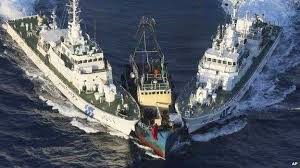Collisions happen. Occasionally the collision which occurs is more accurately termed an allision, where a ship has struck a stationary object. A three ship collision rarely occurs which is probably why the term “trillision” has never been coined, until now.
On 30 October 2104 a trillision occurred causing the total loss of a cargo of 2,600 tons of soybean meal carried on one of the ships, the Yu Jiang Hai 666.
The cargo underwriter was the People’s Insurance Company of China (PICC) and the loss was initially dealt with as a straightforward claim. PICC had to satisfy itself that the loss was genuine and to discount any salvage value and then also to consider what recovery claim it could run by way of subrogated rights as the insurer.
That’s where the case took a wrong direction for the cargo insured because PICC refused to pay and it ended up being litigated in the Wuhan Maritime Court, one of the main maritime courts in China.
PICC decided to bring in the owners of the Yu Jiang Hai 666 as a third party.
All parties and surrounding facts in the case were domestic to China. The soybean meal was being carried between two Chinese ports and the bill of lading was drafted for domestic carriage.
PICC came up with the bright idea that they could refuse to pay under the cargo insurance policy due to the particular terms in the bill of lading. They pointed to a clause which indicated that the shipowner was exempt from any liability if the loss was covered by a cargo insurance policy.
So PICC cried foul – why should they pay the insured if the insured had given up PICC’s subrogated rights against the shipowner under that clause?
The Maritime Court considered the whole of the bill of lading terms and decided that other terms made it clear the shipowner could be liable even if the cargo insurance policy also covered those losses.
The Court left open the point whether PICC could have won the case if the clause had been more clearly drafted in the shipowner’s favour. It was a curious situation where PICC and the shipowner had a common interest, as the clause could have protected them both!
It’s important to remember that such a clause would be unenforceable in any event if the carriage had involved a foreign port; the Maritime Code of China, following the principles in the Hague Visby Rules, makes sure of that.
It is possible that an overseas cargo underwriter could find themselves in the same position as PICC, covering cargo on the last leg of the carriage after transhipment at a coastal port. Could that underwriter rely upon a better drafted clause in an English court?
Peter Murray & John Lin
(A full English translation of this decision can be found as Case 211 in www.chinesemaritimecases.com. Thousands of cases are decided by the specialist maritime courts of the People’s Republic of China every year, which offer a large bank of knowledge about Chinese maritime law and practice. Often the circumstances of the case are novel and are never dealt with in the courts of other jurisdictions. This website makes freely available to a wider audience a selection of the most significant of Chinese maritime cases, translated into English. It is a joint venture of Tulane Maritime Law Center (TMLC), at Tulane University Law School, New Orleans, USA, and Shanghai International Shipping Institute (SISI) and Shanghai Maritime University (SMU) in Shanghai, PRC.)



